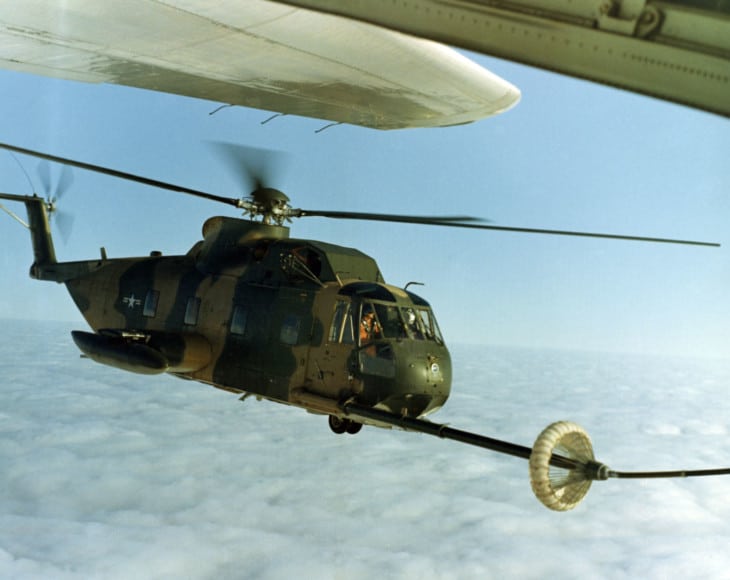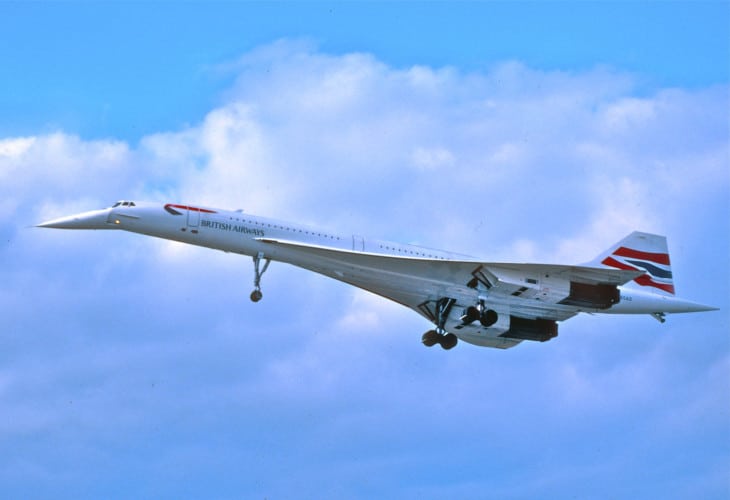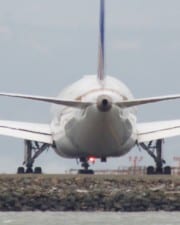Most of us are happy that airplanes fly us to our destination as fast as possible once we board it. We don’t bother about the technicalities involved in flying around. One of the things that many passengers overlook is the amount of fuel that an aircraft uses, which can be staggering amounts…
Surprisingly, on a per-passenger-basis, airplanes are actually quite fuel-efficient.
According to Boeing, a 747 usually burns around 1 gallon of fuel (around 4 liters) every second. A Boeing 747 will then burn about 5 gallons of fuel per mile or 12 liters per kilometer.
On the other hand, a new car can consume a gallon of fuel for about 35 miles traveled. But most cars only carry the driver. A Boeing 747 can carry more than 600 people. In this example, the airplane (B747) would do about 120 miles per gallon. Not so bad, is it?
However, the level of fuel consumption in aircraft usually varies from one aircraft type to another. The amount of fuel used by an aircraft usually depends on its size, engine capacity, and lots more. So, how much fuel do different aircraft use? Let’s dive deep into this!
How Much Fuel Do Different Types of Aircraft Use
| CATEGORY | AIRCRAFT | FUEL |
| Helicopters | small piston engine | 6-16 gallons per hour |
| large turbine engine | 20-100 gallons per hour | |
| Gyroplanes | Commander Elite 447 | 3 gallons per hour |
| Single Engine Turboprops | Piper M600; Cessna Denali | 39-60 gallons per hour |
| Twin Engine Turboprops | Beechcraft King Air 350; Saab 340; Beechcraft King Air 250 | 90-135 gallons per hour |
| Light Jets | Cessna Citation CJ1+; Cessna Citation III | 132-241 gallons per hour |
| Mid-Size Jets | Learjet 60; Hawker 800XP | 215-291 gallons per hour |
| Super Midsize Jets | Dassault Falcon 50EX; Cessna Citation X | 287-347 gallons per hour |
| Heavy Jets | Dassault Falcon 900; Bombardier Challenger 603 | 303-329 gallons per hour |
| Long Range Jets | Dassault Falcon 8X; Gulfstream G650 | 347-453 gallons per hour |
| Cargo Planes | Boeing 747 | 3600 gallons per hour |
| Taildraggers | Luscombe 8A | 4 gallons per hour |
| Light Sport Aircraft | Icon A5 | 5-10 gallons per hour |
| Fighter Jets | McDonnell Douglas (Boeing) F-15 Eagle | 385 gallons per minute |
| Supersonic Airliners | Concorde | 25,750 gallons per hour |
Helicopters
A helicopter, also called a chopper, is a popular aircraft that’s often categorized as a rotorcraft. Helicopters can lift and thrust due to the help of the horizontally spinning rotors.
The best thing about the helicopter is that they can fly horizontally, vertically, laterally, both forward and backward, and hover unlike most fixed-wing aircraft that only fly horizontally and forward.

The amount of fuel used by a helicopter usually depends on the type of fuel it is using. A helicopter using aviation turbine fuel will use more fuel than a piston engine helicopter.
However, the good thing is that aviation turbine gas is quite cheaper than Avgas, which can help reduce the cost of fueling them.
A helicopter powered by a small piston engine can use around 6-16 gallons of fuel per hour. On the other hand, a helicopter powered by a large turbine engine can use about 20 gallons of fuel per hour to about 100 gallons of fuel per hour.
Gyroplanes
Gyroplanes, also called gyrocopters, are rotorcraft aircraft that lifts from the ground with a rotor machine. A gyrocopter is designed for cruising at low altitudes and needs a 540ft runway to take off.
Interestingly, a gyroplane only needs 100 ft of space to land.
Gyroplanes are equipped with a 27-gallon gas tank and can fly up to a 220-mile range. For instance, the Commander Elite 447 will use 3 gallons of fuel in an hour, giving it a range of about 90 miles (when flying at a cruise speed of 45 mph).
However, a larger gyroplane will need more fuel to fly.
Single Engine Turboprops
A turboprop aircraft is powered by a single gas turbine engine connected to the gear and helps turn the propeller to move the aircraft through and around the air. A turboprop aircraft is usually larger than a piston aircraft and can fly to around 35,000 feet high.
However, they are slower than jet planes but consume less fuel. The size of a turboprop varies from one aircraft to another and can accommodate up to 10 passengers.
Related: Fastest Single Engine Turboprop Planes
A common single engine turboprop aircraft is the Beechcraft (formerly Cessna) Denali, which burns roughly 60 gallons of fuel per hour.
On the other hand, a Piper M600, another turboprop aircraft, can burn about 39 gallons of fuel.
Twin Turboprops
Unlike single-engine turboprops, twin-engine turboprops are powered by two turboprop engines. This makes it faster than a single engine turboprop. Twin engine turboprop aircraft can be used for both commercial flights and comfortable private transportation.
The size of a twin turboprop usually varies from one aircraft to another and can accommodate up to 39 passengers.
One of the most popular twin turboprops aircraft is the Beechcraft King Air 250, which burns around 134.55 gallons of fuel per hour. It’s more fuel efficient successor, the King Air 350, burns only 90 gallons of fuel per hour.
Unlike piston and single engine turboprops, twin turboprops are the smallest category of aircraft to be used as commercial airliners on a mass scale.
One of the most popular twin engine turboprop airliners is the Saab 340, whose fuel consumption sits at around 118.87 gallons of fuel per hour.
Light Jets
Light jets are a popular type of chartered plane used by business owners to fly around. Light jets are a cost-effective way to fly small distances if you have light luggage. Furthermore, light jets can only accommodate 4-6 individuals.
There are several types of light jets out there, and the difference between each aircraft when it comes to fuel consumption is relatively small.
The light jet that burns the most fuel per hour is the Cessna Citation III. A Citation III can burn about 241 gallons of fuel per hour.
On the other hand, Cessna Citation CJ1+ burns the least fuel per hour. On average, Cessna Citation CJ1+ can burn about 132 gallons of fuel per hour.
Mid-Size Jets
A midsize jet is quite bigger than a light jet and has more speed. It is suitable for both short and long-haul flights. A midsize jet can accommodate around 10-12 people based on the capacity.
A smaller midsize jet is more efficient than the larger one when it comes to fuel consumption. Hawker 800XP is a midsize jet that burns the most fuel per hour. On average, a Hawker 800XP can burn about 291 gallons of fuel per hour.
On the other hand, the Learjet 60 is another midsize jet that consumes around 215.10 gallons of fuel per hour.
Super Midsize Jet
Jets in super-midsize jets exceed the maximum midsize jets range, and they can fly up to 6,200km or 5-6 hours according to the number of passengers on board.
A super-midsize jet cabin is usually between 1.70-1.90m high, allowing most travelers to stand up. Jets in this category are also 40% larger than a jet in the midsize category.
The Cessna Citation X is a popular jet in this category. On average, a Citation X can burn 347 gallons of fuel per hour. Another popular jet in this category is the Dassault Falcon 50EX, and it burns about 287 gallons of fuel per hour.
Heavy Jets
Heavy jets are bigger than light and midsize jets with more space and range, thus offering more usability than their smaller counterparts, though are occasionally restricted on which airports they can fly to.
A heavy jet offers a different range from 6000-8000km and can fly for 6-8 hours. A heavy jet cabin is also about 1.80-1.90m high, allowing most passengers to stand up.
In the heavy and long jets category, the Bombardier Challenger 605 usually burns about 329 gallons of fuel per hour. However, a Dassault Falcon 900 can burn around 303 gallons of fuel per hour.
Long Range Jets
A long range jet is a jet that can fly 8,500-12,900km without having a fuel stop. An long range jet is very spacious and comfortable and can be divided into three working and resting areas.
The cabin is also about 1.85-1.95m high, allowing most passengers to stand up.
One of the popular long range jets is the Gulfstream G650, which can burn about 452.70 gallons of fuel per hour, making it the most fuel-consuming jet in its class.
On the other hand, the most fuel efficient long range jet – the Falcon 8X – burns around 346.50 gallons of fuel per hour.
Cargo Planes
Cargo aircraft, also called airlifters, freighters, or cargo jets, are used for flying cargo instead of individual passengers. Cargo planes are specially built for carriages and have wide doors and equipment for protecting and providing shipment.
Cargo aircraft can be used for civil purposes and military usage. A cargo aircraft like the Boeing 747 can be used for carrying cargo about 113,000 kg and can burn about 10-11 tonnes of fuel per hour during a cruise.
This means a Boeing 747 can burn about 1 gallon of fuel per second on average. However, it has a range of 7,790 nautical miles and can carry around 238,604 liters of fuel.
Taildraggers
Taildraggers, also called tail-wheel type gear draggers, are conventional aircraft types that use a single tail wheel instead of the modern tricycle design. They have two main wheels at the front and a small-sized wheel for skidding near the tail area.
Taildraggers are quite light in size and weight and can also be used in skis. Luscombe and Taylorcraft are common taildraggers and the fastest aircraft.
A well-rigged Luscombe 8A can cruise at 90-110MPH on 65 HP and burn around 4 gallons of fuel per hour.
Light Sport Aircraft
Light sport aircraft, also called LSA, is a new category of small and lightweight aircraft. It is quite easy to fly a light-sport aircraft but usually differs from one country to another. They are quite heavier than ultralight aircraft but are very sophisticated.
A light-sport aircraft can hold 18.4 gallons of fuel. They need oil changes every four months or 50 hours of use. On average, a light-sport aircraft can burn about 5-10 gallons of fuel per hour.
Fighter Jets
Fighter jets, also called fighter aircraft or fighters, are military fixed-wing aircraft designed to fight in the air against other aircraft. There are several categories of fighter jets such as heavy, light, night, interceptor, all-weather, and so on.
Fighter jets have a high speed and are equipped with several innovations due to the help of technological advances.

The greater the payload and range of a fighter jet, the more fuel is will burn. Altitude also plays a role, as the higher you go, the thinner the air becomes, meaning you need less power to push the aircraft along, and thus use less fuel.
If flying at sea level at full afterburner, the F-15 can burn through an astonishing 385 gallons per minute! Though this could only be done for around six minutes as it would burn through the F-15’s entire fuel load.
Concorde
Concorde is among the most iconic planes in history. This aircraft was designed to make a supersonic flight, and it is extremely fast. It has an iconic pointed nose design and makes the thunderous sound it makes when flying around.
Due to its supersonic flight design, ground operations and takeoff of a Concorde usually consume lots of fuel.

A Concorde can use about two tons of fuel for an average taxi. It then uses an afterburner for takeoff and to accelerate and break the sound barrier.
Fun fact: prior to ceasing operations, a Concorde also used around 32.5 liters of fuel per second, or 20,500 kg of fuel per hour, when flying!
Indeed, one of the main reasons the Concorde ceased operations was due to the huge fuel bill it left airlines, meaning that whilst prestigious, airlines seldom made money on Concorde flights.
How Much Does It Cost To Fuel An Airplane?
The cost of fueling an airplane is quite expensive. Fueling even a small aircraft having a capacity of about a 30-gallon fuel tank can cost around $140-$150 based on the fuel type. However, fueling a very large plane like the Airbus A380 can cost more than $400,000.

What Fuel Do Planes Use For Flying?
Although there are several types of airplane fuel worldwide, general aviation aircraft, commercial airplanes, and private jets use two main types of airplane fuel. These are jet fuel and AVGAS.
Jet fuel is a colorless and refined kerosene-based type of fuel. Jet fuels are commonly used for aircraft with turbine engines and turboprops. Jet fuel can also be categorized into two types, namely: Jet A and Jet A1 fuel.
Aviation gasoline (AVGAS) is an aviation fuel that is used for powering small piston-engine airplanes. These aircraft types are used by flight training jets, private pilots, and flying clubs.
There are also two types of AVGAS, namely, AVGAS 100 and AVGAS 100LL.
Aside from these, there are some other fuels used by flight operators and airlines in special situations too. Some of the other types of aviation fuels are:
- TS-1: This type of aviation fuel has a low freezing point (-50C), and it is suitable for flying in cold weather. Russia and CIS nations commonly use this type of fuel to fly their aircraft.
- Jet B: This type of fuel is a mixture of gasoline and kerosene (70%-30%, respectively). It has a freezing point of -60C, and it is commonly used in extremely cold countries such as Alaska and Canada. However, it is rare to use as it is highly flammable.
- JP-8: This is an aviation fuel used for operating military aircraft. JP-8 looks like a Jet A1 fuel but has anti-icing and corrosion inhibitor additives.
- JP-5: This type of fuel is a complex combination of hydrocarbons such as alkanes and naphthene. It is used for operating military aircraft. JP-5 has a high flashpoint of 60C, which helps to reduce fire risks that are common with aircraft carriers’ transportation.
How Much Fuel Per Passenger Can An Aircraft Consume?
According to Open Airlines, a passenger aircraft can consume 3-4 liters of fuel per passenger per 100 km. This shows that fuel is the number one cost for an airline, representing about 30% of the total costs of flying.
Related Posts













